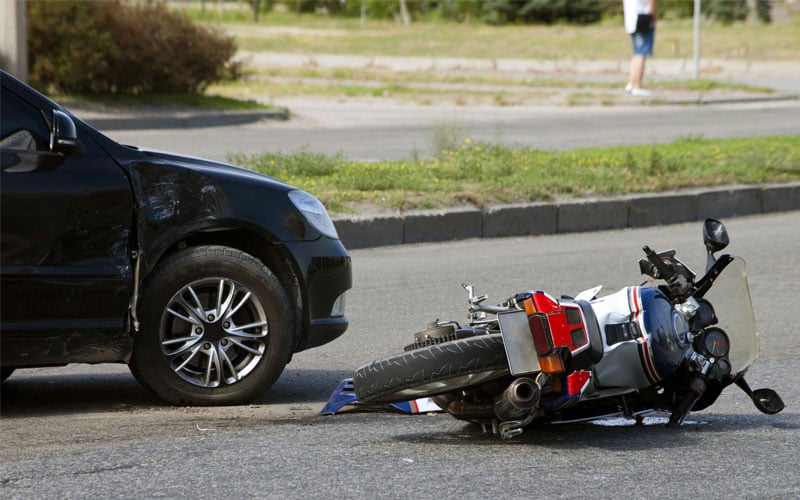TIPS: Avoid Motorcycle Accidents
As a motorcycle rider, I also feel sad when I hear the news of a motorcycle accident, let alone causing severe injuries and even death, it is better to analyze what caused the accident. and avoid it, as well as efforts to avoid the impact of accidents if we have a motorcycle accident. In 2012 according to national data (NHTSA), 3,921 people were killed and 104,000 people were injured in accidents involving large trucks and motorbikes that occurred in Oklahoma. To handle the completion of a car accident injury settlements in Oklahoma, a personal injury lawyer is ready to help you.
Accidents can be avoided if we have a good understanding of safe driving. Based on a number of references that I have read coupled with personal experience, I can conclude a number of points that must be done before driving to avoid undesirable things when we drive, including:
1. Self Preparedness
Grow suggestions that accidents can occur anywhere, whether on a long trip or very close, such as when you shop at a convenience store near the house. Then always prepare mentally to deal with all things that are not desirable.
The second suggestion, is that motorists only “stand” on two wheels with the part that tracks asphalt only an area of approximately 20 × 5 cm on each wheel, no matter how big / wide your motorbike wheels are. So, the motorbike is the most unstable vehicle and easily falls between other vehicles, and is very easy to cause fatal injuries to the rider in the event of an accident.
The next suggestion is that when we drive, we will meet with buses and large trucks that are difficult to overtake, public vehicles that behave arbitrarily, reckless motorists, pedestrians who cross haphazardly, all of which can cause fatal accidents. Then prepare yourself with good driving equipment to avoid fatal injuries, such as using a standard helmet, shoes, gloves, and jackets, and additional protection if needed. Remember that a motorcycle is an open vehicle, which means the driver will DEFINITELY fall from a motorcycle and touch other objects such as asphalt and other vehicles when an accident occurs.
2. Vehicle Readiness
Manufacturers of motorbike designs, regardless of their shape and type, always pay attention to the completeness of driving safety, for example:
- – Mirror, is a tool for drivers to see the traffic conditions behind the driver’s body.
- – Turn signal, marked in yellow, is a communication device for motorbike riders with other road users, that is to say that we will turn directions.
- – Brake lights, marked in red, are communication devices for motorbike riders with other road users, namely telling us that we are braking and slowing down the motorbike, so drivers behind must be careful. As for the brake lights including city lights, to indicate the presence of a motorcycle at night to be seen from behind.
- – horns, marked with sound at a certain decibel level, function as a means of communication with other drivers so that they know the whereabouts of drivers when we are going to overtake, turn, etc.
- – Main lights / headlights, besides functioning for nighttime lighting, the use of headlights during the day can make other road users more aware of the existence of motorbikes. As long as there are no specifications changes (modifications), the main lights are safe to use continuously, day and night.
Understand the function of each component above, and its role in reducing the risk of accidents. Always pay attention to the components above, even if your motorcycle changes and modifies. Will it be useless if a motorcycle looks cool but has the potential to cause accidents?
3. Understanding the Environment
Pay attention to every detail of the conditions in the environment around the area we drive, such as road conditions, other road users, crowds around the road, and others. the more you get information, the more references to adjusting driving behavior. For example, in the face of damaged road conditions, the market spills, places that have the potential to cause severe congestion and so on, then we can prepare mentally and adjust driving behavior. But, keep in mind so as not to over-evidence, for example when you meet a smooth and empty road, drivers tend to speed up and pay little attention to the conditions around them. This can also cause accidents when things happen that we don’t predict, such as leaking tires, animals crossing, other road users who are not careful, and others.
4. Driving preparation and behavior
If you already understand some of the points above, then when we will start driving always do the following:
- pay attention to the driving equipment, the helmet has been clicked, the shoes are used properly (if there are shoelaces, secure it so that it doesn’t get caught), the jacket is closed properly, the bag does not interfere with driving maneuvers, etc.
- pay attention to the condition of the vehicle, the completeness and condition of motorcycle equipment such as brakes, turn signal, mirrors, lights can function properly. Take the time to repair parts that don’t work properly.
- pray before driving.
When a motorcycle is already driving on the road, remember that you don’t drive alone, but also with other road users. Always pay attention:
- focus on road conditions. Avoid using communication tools or chatting with a passenger who can disperse our focus on road conditions.
- understand the driving ability of yourself and the condition of the vehicle. Calculate the ability to overtake whether we can afford and whether motor power is sufficient to overtake, do you make other drivers uncomfortable because driving is not proper (walking slowly in the fast lane or vice versa), etc.
- understand physical and mental conditions. Only ourselves know our physical and mental condition, when we are tired, emotional, sad, etc., try not to influence driving behavior. It is better to take a break to calm yourself than to drive in conditions that do not allow the potential to cause accidents.

